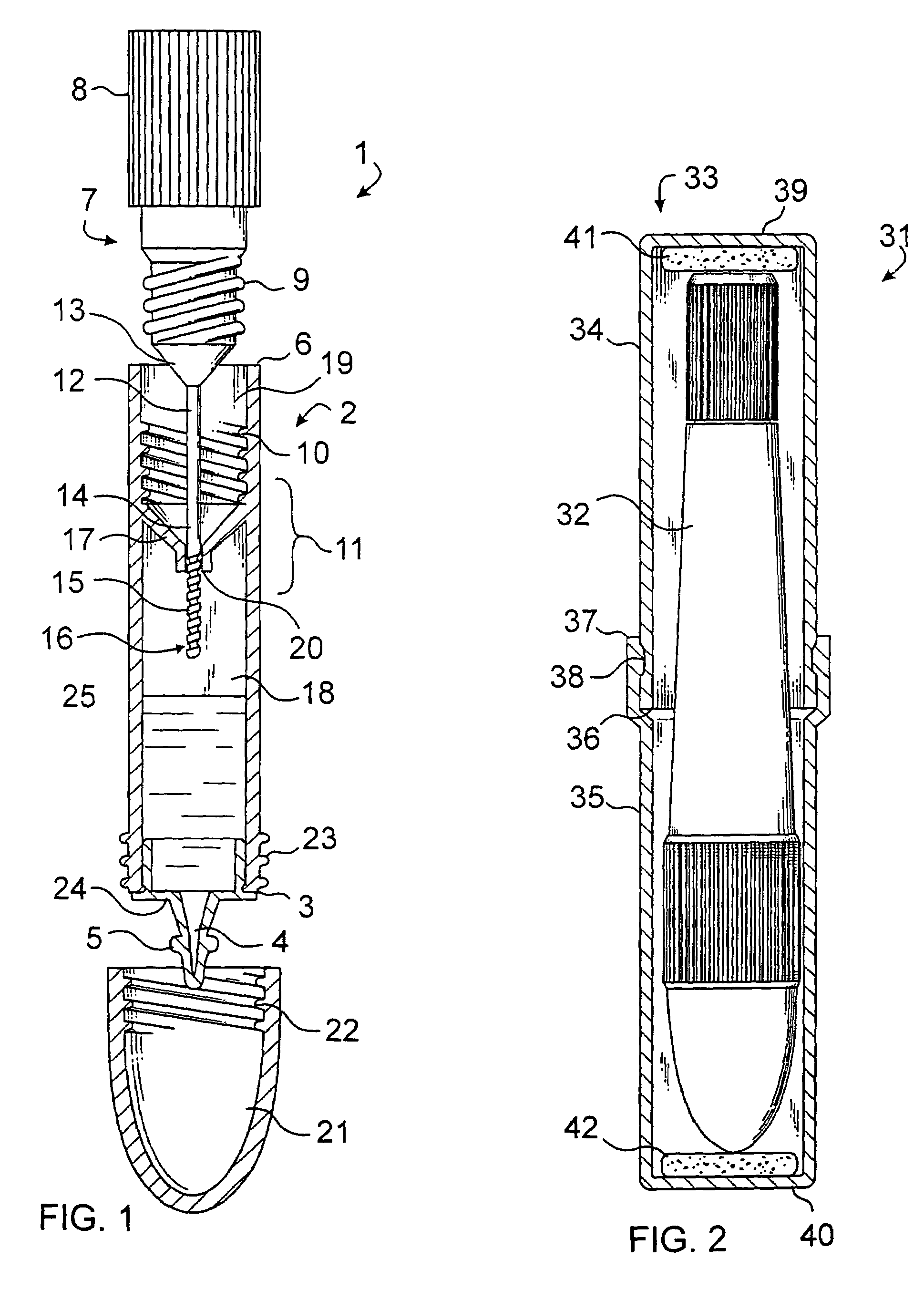Specimen collection and application apparatus
a technology of specimen collection and application apparatus, which is applied in the field of specimen collection, preservation, transportation and analysis of biological tissues and bodies, can solve the problems of affecting the quality of specimens, so as to avoid specimen degradation, enhance protection, and safely cap the breakable nib
- Summary
- Abstract
- Description
- Claims
- Application Information
AI Technical Summary
Benefits of technology
Problems solved by technology
Method used
Image
Examples
Embodiment Construction
[0010]Referring now to the drawing, there is shown a device 1 specially adapted to collect a specimen of fecal or other biological matter, store and preserve it while it is mailed to a laboratory for analysis. The device comprises a tubular, preferably cylindrical, vessel 2 having a first end 3 closed and defining an access port 4 which is releasably sealed by a hollow nib 5 that can be easily broken to open the access port and allow convenient dispensing. The opposite, normally open, end 6 of the vessel is engaged by a stopper 7 comprising a knob 8 and a threaded plunger 9. Screw threads 10 matingly cooperating with the threaded plunger are provided along the inside wall of the vessel from the second end 6 down to a median portion 11 of the vessel. A stick 12 projects axially from the stopper, more specifically, from the conical distal end 13 of the plunger into the vessel. The stick comprises a shank 14 and a sample-holding distal portion 15. The sample-holding portion consists an...
PUM
 Login to View More
Login to View More Abstract
Description
Claims
Application Information
 Login to View More
Login to View More - R&D
- Intellectual Property
- Life Sciences
- Materials
- Tech Scout
- Unparalleled Data Quality
- Higher Quality Content
- 60% Fewer Hallucinations
Browse by: Latest US Patents, China's latest patents, Technical Efficacy Thesaurus, Application Domain, Technology Topic, Popular Technical Reports.
© 2025 PatSnap. All rights reserved.Legal|Privacy policy|Modern Slavery Act Transparency Statement|Sitemap|About US| Contact US: help@patsnap.com


